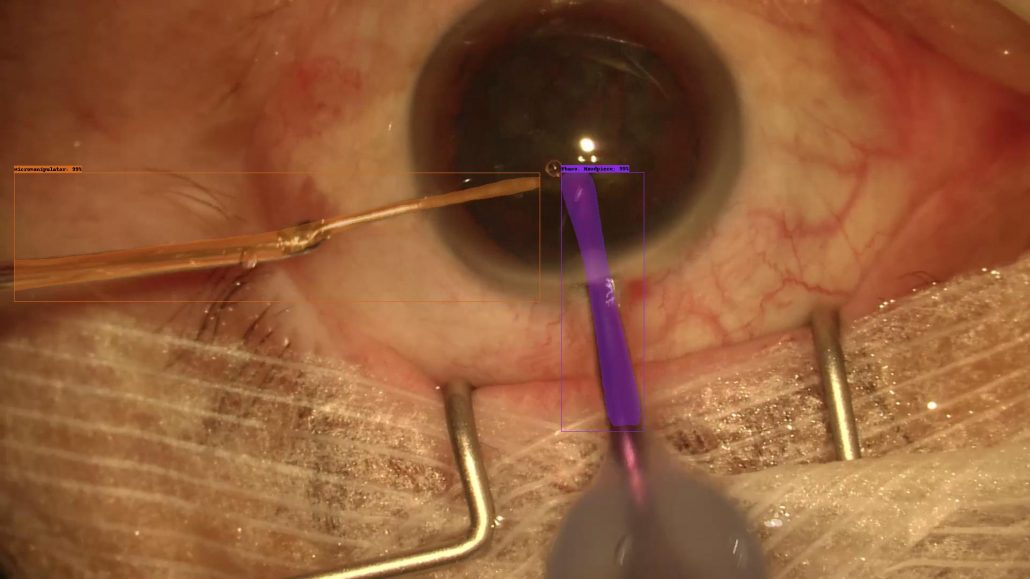Authors: Philipp Moll, Veit Frick, Natascha Rauscher, Mathias Lux (Alpen-Adria-Universität Klagenfurt)
Abstract: The popularity of computer games is remarkably high and is still growing. Despite the popularity and economical impact of games, data-driven research in game design, or to be more precise, in-game mechanics – game elements and rules defining how a game works – is still scarce. As data on user interaction in games is hard to get by, we propose a way to analyze players’ movement and action based on video streams of games. Utilizing this data we formulate four hypotheses focusing on player experience, enjoyment, and interaction patterns, as well as the interrelation thereof. Based on a user study for the popular game Fortnite, we discuss the interrelation between game mechanics, enjoyment of players, and different player skill levels in the observed data.
Keywords: Online Games; Game Mechanics; Game Design; Video Analysis
Links: International Workshop on Immersive Mixed and Virtual Environment Systems (MMVE)
Our Paper “Pixel-Based Tool Segmentation in Cataract Surgery Videos with Mask R-CNN” has been accepted for publication at IEEE 33rd International Symposium on Computer Based Medical Systems (CBMS – http://cbms2020.org).
Authors: Markus Fox, Klaus Schöffmann, Mario Taschwer
Abstract:
Automatically detecting surgical tools in recorded surgery videos is an important building block of further content-based video analysis. In ophthalmology, the results of such methods can support training and teaching of operation techniques and enable investigation of medical research questions on a dataset of recorded surgery videos. While previous methods used frame-based classification techniques to predict the presence of surgical tools — but did not localize them, we apply a recent deep-learning segmentation method (Mask R-CNN) to localize and segment surgical tools used in ophthalmic cataract surgery. We add ground-truth annotations for multi-class instance segmentation to two existing datasets of cataract surgery videos and make resulting datasets publicly available for research purposes. In the absence of comparable results from literature, we tune and evaluate the Mask R-CNN approach on these datasets for instrument segmentation/localization and achieve promising results (61\% mean average precision on 50\% intersection over union for instance segmentation, working even better for bounding box detection or binary segmentation), establishing a reasonable baseline for further research. Moreover, we experiment with common data augmentation techniques and analyze the achieved segmentation performance with respect to each class (instrument), providing evidence for future improvements of this approach.

Acknowledgments:
This work was funded by the FWF Austrian Science Fund under grant P 31486-N31.
IEEE Communications Society extends its appreciation of Hermann Hellwagner as a distingguished member of the IEEE INFOCOM 2020.
See more Information here.
IEEE INFOCOM 2020 – Online Conference July 6-9, 2020
Authors: Venkata Phani Kumar M (Alpen-Adria-Universität Klagenfurt), Christian Timmerer (Alpen-Adria-Universität Klagenfurt, Bitmovin) and Hermann Hellwagner (Alpen-Adria-Universität Klagenfurt)
Abstract: Video delivery over the Internet has become more and more established in recent years due to the widespread use of Dynamic Adaptive Streaming over HTTP (DASH). The current DASH specification defines a hierarchical data model for Media Presentation Descriptions (MPDs) in terms of periods, adaptation sets, representations and segments. Although multi-period MPDs are widely used in live streaming scenarios, they are not fully utilized in Video-on-Demand (VoD) HTTP adaptive streaming (HAS) scenarios. In this paper, we introduce MiPSO, a framework for Multi–Period per-Scene Optimization, to examine multiple periods in VoD HAS scenarios. MiPSO provides different encoded representations of a video at either (i) maximum possible quality or (ii) minimum possible bitrate, beneficial to both service providers and subscribers. In each period, the proposed framework adjusts the video representations (resolution-bitrate pairs) by taking into account the complexities of the video content, with the aim of achieving streams at either higher qualities or lower bitrates. The experimental evaluation with a test video data set shows that the MiPSO reduces the average bitrate of streams with the same visual quality by approximately 10% or increases the visual quality of streams by at least 1 dB in terms of Peak Signal-to-Noise (PSNR) at the same bitrate compared to conventional approaches to video content delivery.
Keywords: Adaptive Streaming, Video-on-Demand, Per-Scene Encoding, Media Presentation Description
IEEE International Conference on Multimedia and Expo. July 06 – 10, London, United Kingdom
Authors: Babak Taraghi (Alpen-Adria-Universität Klagenfurt), Anatoliy Zabrovskiy (Alpen-Adria-Universität Klagenfurt), Christian Timmerer (Alpen-Adria-Universität Klagenfurt, Bitmovin) and Hermann Hellwagner (Alpen-Adria-Universität Klagenfurt)
Abstract: Attempting to cope with fluctuations of network conditions in terms of available bandwidth, latency and packet loss, and to deliver the highest quality of video (and audio) content to users, research on adaptive video streaming has attracted intense efforts from the research community and huge investments from technology giants. How successful these efforts and investments are, is a question that needs precise measurements of the results of those technological advancements. HTTP-based Adaptive Streaming (HAS) algorithms, which seek to improve video streaming over the Internet, introduce video bitrate adaptivity in a way that is scalable and efficient. However, how each HAS implementation takes into account the wide spectrum of variables and configuration options, brings a high complexity to the task of measuring the results and visualizing the statistics of the performance and quality of experience. In this paper, we introduce CAdViSE, our Cloud-based Adaptive Video Streaming Evaluation framework for the automated testing of adaptive media players. The paper aims to demonstrate a test environment which can be instantiated in a cloud infrastructure, examines multiple media players with different network attributes at defined points of the experiment time, and finally concludes the evaluation with visualized statistics and insights into the results.
Keywords: HTTP Adaptive Streaming, Media Players, MPEG-DASH, Network Emulation, Automated Testing, Quality of Experience
Abstract: HTTP adaptive streaming with chunked transfer encoding can offer low-latency streaming without sacrificing the coding efficiency.This allows media segments to be delivered while still being packaged. However, conventional schemes often make widely inaccurate bandwidth measurements due to the presence of idle periods between the chunks and hence this is causing sub-optimal adaptation decisions. To address this issue, we earlier proposed ACTE (ABR for Chunked Transfer Encoding), a bandwidth prediction scheme for low-latency chunked streaming. While ACTE was a significant step forward, in this study we focus on two still remaining open areas, namely (i) quantifying the impact of encoding parameters, including chunk and segment durations, bitrate levels, minimum interval between IDR-frames and frame rate onACTE, and (ii) exploring the impact of video content complexity on ACTE. We thoroughly investigate these questions and report on our findings. We also discuss some additional issues that arise in the context of pursuing very low latency HTTP video streaming.
Authors: Abdelhak Bentaleb (National University of Singapore), Christian Timmerer (Alpen-Adria-Universität Klagenfurt, Bitmovin), Ali C. Begen (Ozyegin University, Networked Media), Roger Zimmermann (National University of Singapore)
Keywords: HAS; ABR; DASH; CMAF; low-latency; HTTP chunked transfer encoding; bandwidth measurement and prediction; RLS; encoding parameters; FFmpeg





